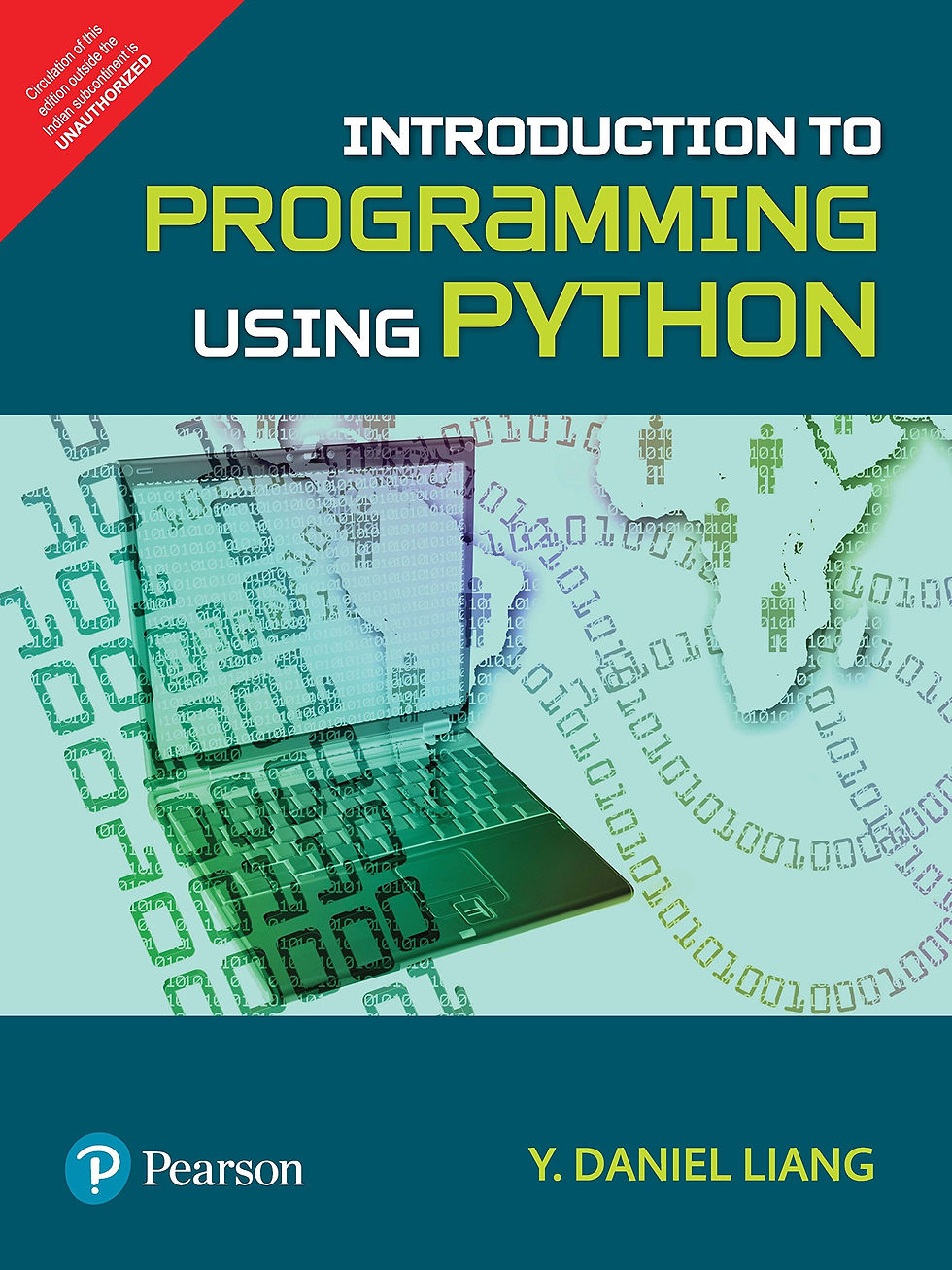Introduction to Programming Using Python
- Author: Liang Y. Daniel
- Publisher: Pearson Education
- Language: English
- Edition: 1st
- Year of Print: 2021
- Binding: Paperback
- Print Length: 557 Pages
- ISBN: 9789332551848
About the Book
Introduction to Programming Using Python is intended for use in the introduction to programming course.Daniel Liang is known for his “fundamentals-first” approach to teaching programming concepts and techniques. “Fundamentals-first” means that students learn fundamental programming concepts like selection statements, loops and functions, before moving into defining classes. Students learn basic logic and programming concepts before moving into object-oriented programming and GUI programming. Another aspect of Introduction to Programming Using Python is that in addition to the typical programming examples that feature games and some math, Liang gives an example or two early in the chapter that uses a simple graphic to engage the students. Rather than asking them to average 10 numbers together, they learn the concepts in the context of a fun example that generates something visually interesting.Fundamentals-first approach introduces basic programming concepts and techniques on selections, loops, functions, before writing custom classes. Liang introduces and uses objects in Chapter 3, but defining custom classes is covered later in Chapter 7.Problem-driven approach teaches programming in a problem-driven way that focuses on problem solving rather than syntax. Liang captures students’ interest by using interesting examples in a broad context (areas include math, science, business, financials, gaming, animation and multimedia). Appropriate syntax and libraries are introduced in order to solve the problems.Flexible GUI Coverage gives instructors the flexibility to skip graphics topics or cover these topics later in the course. The book use Python’s built-in Turtle graphics module in Chapters 1-6 and Tkinter in the rest of the book. Both Turtle and Tkinter are simple, easy to learn and valuable pedagogical tools for teaching the fundamentals of programming and object-oriented programming. GUI Examples are offered early in every chapter and a special set of GUI exercises appears at the end of every chapter.Based on Python 3.Student Resource Website contains the following resources:Answers to review questionsSolutions to even-numbered programming exercisesSource code for the examples in the bookInteractive Self-Test (organized by sections for each chapter)Supplements on using Python IDEs, advanced topics, etc.Resource linksErrataInstructor Resource Website, accessible from of Contentscontains:Chapter 1 Introduction to Computers, Programs and PythonChapter 2 Elementary ProgrammingChapter 3 Introduction to Functions, Strings and ObjectsChapter 4 SelectionsChapter 5 LoopsChapter 6 FunctionsChapter 7 Object-Oriented ProgrammingChapter 8 Thinking in ObjectsChapter 9 GUI Programming Using TkinterChapter 10 ListsChapter 11 Multi-dimensional ListsChapter 12 Inheritance and PolymorphismChapter 13 Files and Exception HandlingChapter 14 Tuples, Sets and DictionariesChapter 15 Recursion Chapters 16-23 are bonus Web chapters on DSChapter 16 Developing Efficient AlgorithmsChapter 17 SortingChapter 18 Linked Lists, Stacks, Queues and Priority QueuesChapter 19 Binary Search TreesChapter 20 AVL TreesChapter 21 HashingChapter 22 Graphs and ApplicationsChapter 23 Weighted Graphs and Applications
-min.png)

.png)



%20(1)-min.png)

